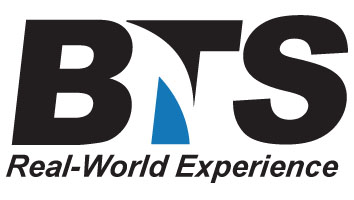Introduction to Cisco Unified Communications Manager
- Components within a Cisco Unified Communications solution
- Characteristics of CUCM IBM IDS database
- Licensing models
- Deployment models
- Call-processing redundancy in a CUCM cluster
Cisco Unified Communications Manager Administration
- How basic settings are configured
- Explore the difference between network and feature services managed using Cisco Unified Serviceability
- Features of CUCM Enterprise Parameters
- Characteristics of Enterprise Phone Configuration
- Purpose of service parameters
- Administrator account use and its account type
- Assign user privileges to application and end users
- Methods of user management
- Bulk Administration Tool (BAT) user management operation
- Create user accounts using the CUCM Bulk Administration Tool (BAT)
- Types of LDAP support provided by CUCM
Cisco Unified Communications Manager Single-Site On-Net Calling
- The boot sequence of Cisco IP phones
- Support for H.323 endpoints
- Add a third-party SIP IP phones
- How to enable endpoint configuration elements
- Configure settings of phone templates and profiles
- Sequence the steps in the autoregistration process
- How autoregistration is enabled for automatic insertion of new phones to the configuration database
- How Auto-Register Phone Tool is used to add IP phones
- Learn how BAT is used to add phones to CUCM
- Manually add phones
- Manually add IP phones by using Cisco Unified Communications Manager BAT and autoregistration
Implementing PSTN gateways in Cisco Unified Communications Manager
- Types of gateways that can interact with Cisco Unified Communications Manager
- Integrate MGCP gateways
- Learn to configure a Cisco IOS MGCP gateway to integrate with Cisco Unified Communications Manager
- Configure Cisco Unified Communications Manager to use a Cisco IOS MGCP gateway
- How to integrate H.323 gateways
- Configure Cisco Unified Communications Manager to use a H.323 gateway
- Integrate SIP gateways with Cisco Unified Communications Manager
CUCM Call Routing Components and Calling Privileges
- Components of a dial plan
- Different endpoints and how they can be addressed in a CUCM dial plan
- Determine what route pattern will be used
- Characteristics of CUCM Digit Analysis
- Addressing methods supported by CUCM to the appropriate devices
- Special call-routing features
- Steps to configure CUCM path selection
- Configure a basic dial plan
- Key characteristics of calling privileges
- Outcome of a specific CSS configuration
- Rules and guidelines for working with CSSs and partitions
- Partitions and CSSs
Digit-manipulation Tools and Calling Privileges
- Digit-manipulation elements and their characteristics
- Use external phone number masks
- Features of translation patterns
- Transformation masks
- How to strip and prefix digits
- Characteristics of significant digits configuration
- Global Transformations
- How incoming number prefixes are used
- Configure digit manipulation using route lists
- Applications for calling-privileges
- Learn how time schedules operate
- Describe how time periods operate
- Reasons for gateway selection
- Methods of CoS implementation
- Steps to implement vanity numbers
- Best way to implement carrier selection based on the time of day
- Distinguish between the operations of CMC and FAC
- CMC and FAC implementation
- Configure Forced Authorization Codes
Implementing Call Coverage
- Characteristics of a shared line
- How call hunting works
- Outcome for a call placed to a directory number in call hunting and forwarding scenarios
- Configure call hunting
Implementing Media Resources in Unified Communications Manager
- Types of media resources and their functions
- How Cisco Unified Communications Manager supports hardware and software based media resources
- Features of different conference types available
- Steps to configure conference bridge media resources
- Configure a Meet-Me conference pattern
- Characteristics of MOH solutions
- How to configure MOH media resources
- Features of the integrated annunciator
- Identify true statements about how access control to media resources works
- How to configure MRGs and MRGLs to devices
- Assign MRGs and MRGLs to device pools
Feature and Application Implementation
- Features of Cisco IP Phone Services
- How to provide redundancy for Cisco IP Phone Services
- Configure IP Phone Services
- Subscribe configured Cisco IP Phone Services to Cisco Unified IP phones
- Create an XML-based phone service and subscribe a phone to that service
- How CUCM native presence operates
- Implement CUCM presence policies to control which watcher can monitor which presence entities
- Configure Cisco Unified Communications Manager presence
- Implement presence policies
- Configure presence-enabled speed
dials on a Cisco IP phone and Cisco Unified Communications Manager to
support presence-enabled call lists
Cisco Unified Mobility
- Features of Cisco Unified Mobility
- Recognize the features of call flows
- Requirements for implementing and configuring Cisco Unified Mobility
- Factors to consider when using Cisco Unified Mobility MVA
- Configure Mobile Connect
- How to implement MVA
